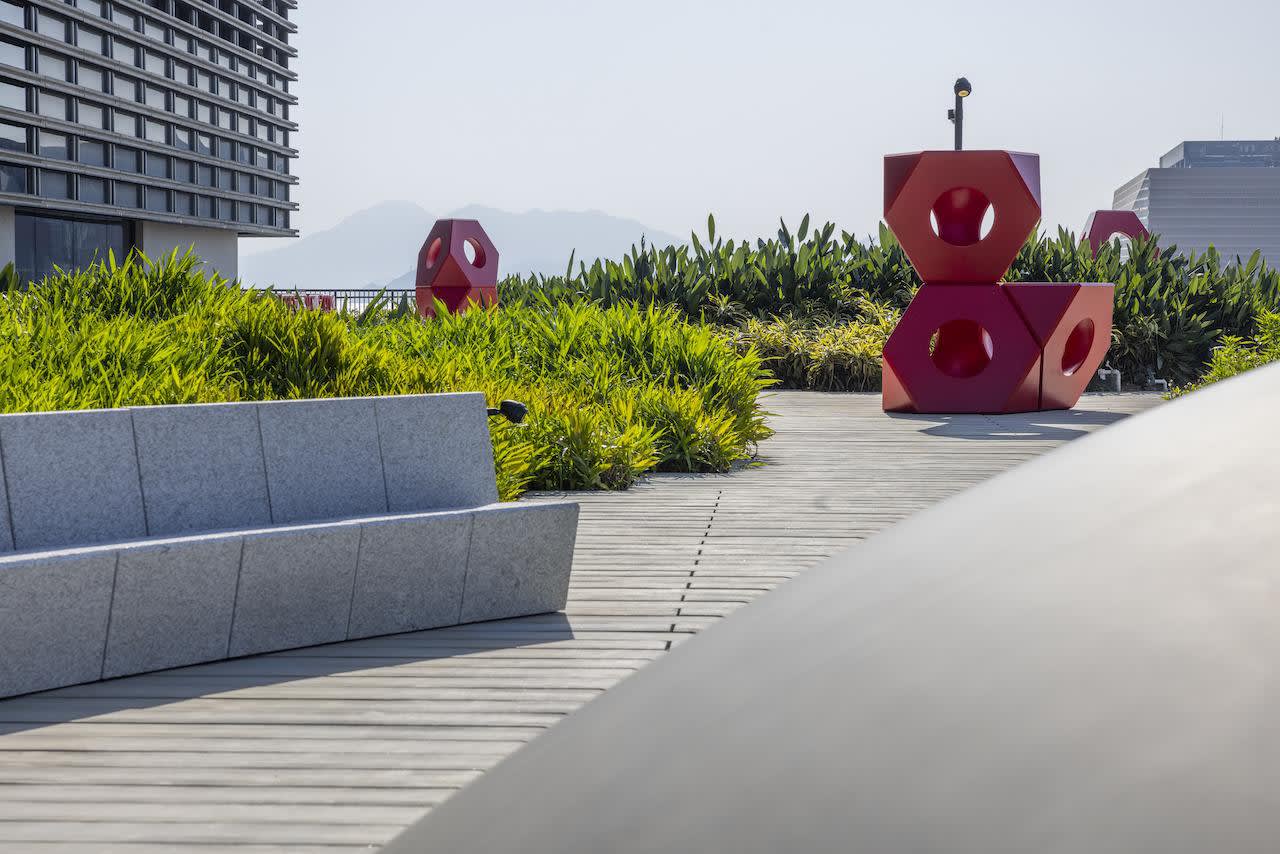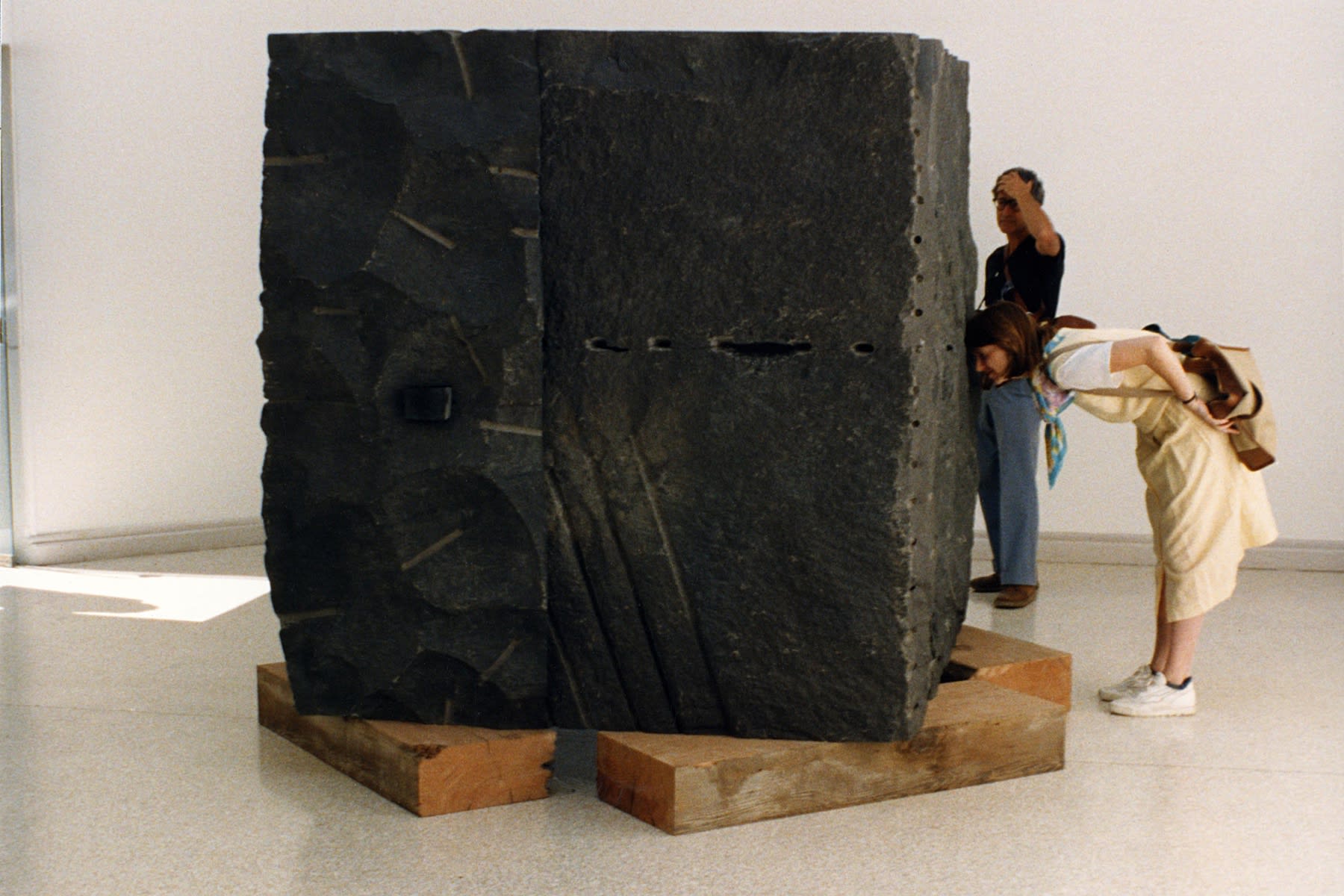-

-
The Art and Design of Isamu Noguchi – Interact to Connect
The M+ Museum has recently installed the Playscape in its north roof garden, inviting visitors to use not only their eyes but also their bodies to understand and appreciate the works on display. Inspired by one of the most versatile and critically acclaimed artists and designers in the twentieth century, Isamu Noguchi, the interactive outdoor gallery features three sculpture installations – or what can be considered play equipment – by Noguchi. Dotted throughout the garden are various configurations of his signature work Octetra, a modular geometric structure created based on patterns found in nature; there is also a labyrinthine pyramid, extracted from a playground in Japan designed by Noguchi, standing stately on one side overlooking the Hong Kong skyline, which is then juxtaposed by a semi-sphere concrete mound that appears to have grown out of the ground. Like nature, these sculptures are open-ended yet deeply connected to the human body, created with modern aesthetics, freedom of interpretation and social function in mind.

As viewers walk around, clamber through or climb up and down the structures, they become aware of the materials, forms and scales of the works in relation to their bodies; the different ways they choose to interact with the works become part of the larger installation. Noguchi once said that “I want sculpture equal to myself walking”; such emphasis on the bodily experience and engagement with viewers is at the core of Nagochi’s artistic practice to search for oneness, and it also resonates with the museum’s mission to offer a multidisciplinary channel for visitors to interact with visual culture as well as each other.
Before you pay your visit to the beautiful garden, read on to learn more about this legendary figure, whose singular aesthetic vision was pivotal in shaping mid-century modern art and design and continues to challenge and renew our perspectives today.

Sculpture, Furniture, Playground, and Everything in Between
A sculptor, landscape architect, product, furniture, playground and set designer, Isamu Noguchi (1904–1988) is a prolific Japanese-American artist who is best known for his in-between practice that defied preconceived dichotomies and categorisations. Never committed to a single medium, material or movement, Noguchi took liberty in traversing a wide range of artistic disciplines, creating works that straddle between fine art and applied art, handicraft and machine made, the natural and the industrial, at once expanding the conception of sculpture, redefining design object and bridging traditional and modern aesthetics of both the East and West.

Noguchi’s cross-cultural multidisciplinary practice may find its root in the artist’s self-inquiry of his transnational identity, which led him to travel around the world to learn different cultures and search for a universal language that connects humanity as a whole. Between his active involvement in the New York art scene working with professionals of myriad disciplines and his various trips back to Japan to study its traditional crafts and undertake garden and playground design projects, Noguchi also travelled to Paris and became the one and only apprentice of Constantin Brancusi, the pioneer of abstract sculpture; to China to study ink painting under one of the most famous Chinese artists Qi Baishi; to Italy to master his carving skill on marble; as well as to Mexico and Southeast Asia to experience the impact of towering ancient stone sculptures and large-scale public art. With an exceptional capability to harmoniously meld these seemingly different worlds into one, Noguchi was driven by the desire to transform space for viewers to reflect on the scale of their existence from a universal perspective and make tangible the human connection that is easily lost to the machine age. The artist achieved these by eschewing the use of pedestals, which breaks down the barrier between a work and viewers, and transforming sculpture into a living environment, integrating his artistic expression into such everyday objects as furniture, lighting and play equipment. As explained by the artist, “everything is sculpture. Any material, any idea without hindrance born into space, I consider sculpture.”

Despite the multitude of his styles and approaches, Noguchi’s works are connected by the fundamental question of the relationship between nature, man and technology. In his sculptures, we can find the merging of human form and the natural quality of stone, showing the artist’s utmost respect towards the rhythm of the earth; or metal pieces assembled into a fragmented human figure, questioning the impact of machine on human life. In his furniture designs, we can see natural and modern materials conspire to construct sofa, chairs and tables of biomorphic shapes that recall his anthropomorphic sculptures; or mass-produced lightings that marry natural materials of mulberry paper and bamboo seen in traditional Japanese lanterns with new lighting technology, illuminating the progress of human civilisation and extending sculpture into immaterial space. In these works, Noguchi dismantles the barrier of binaries and assumed meanings so that we can gain a clearer and wider view of the topography of humanity.
Read more about Noguchi's important works and market.
